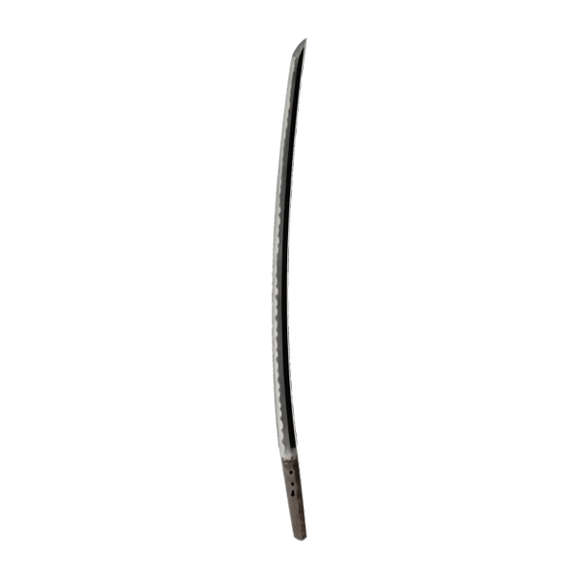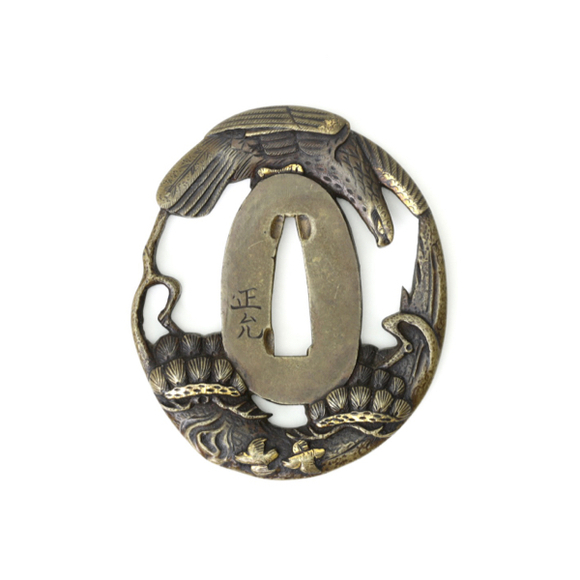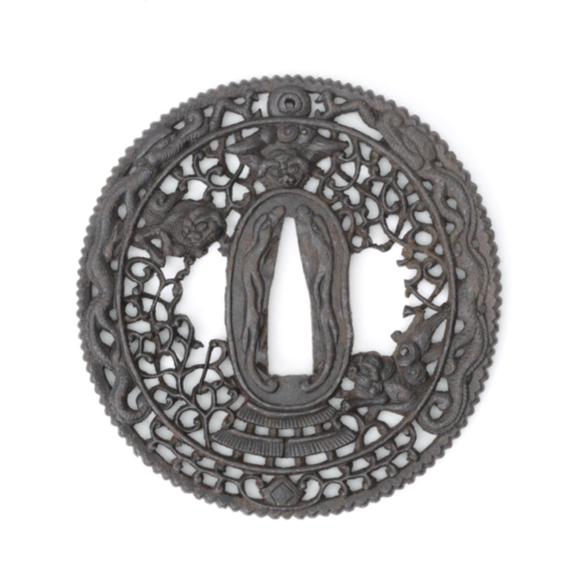Description
Sukesada (祐定) was a maker's name used by a group of smiths active in the village of Osafune in Bizen. It was, together with Mino, one of the two main production centers for swords at the time. The main style that was produced was the uchigatana, optimized for single-handed use, replaced the long tachi. The uchigatana is the predecessor of the later katana, which had a longer grip that could also be used with two hands.
The Muromachi period was a period of intense civil war in Japan where most workshops had to produce large quantities of mass-produced swords for the war effort. Naturally, quality suffered and the period is not generally not known for its high-quality swords.
The first smith to sign with Sukesada was active in the Meitoku (明徳) period of 1390-1394 with extant blades signed from the 2nd year of Meitoku, 1391, to the 27th year of Ōei (応永), 1420.1
A great flood and subsequent mudslide in 1590 or 1591 wiped out the villages of Osafune, Hatakeda and Fukuoka, and effectively ended the local sword making.2
The best of the Sukesada smiths
The height of the Sukesada smiths was attained by Hikobei no Jō Sukesada (彦兵衛尉祐定) and his son Yosozaemon Sukesada (与三左衛門尉祐定, 1466-1542), the two top smiths of the Sue-Bizen (late Bizen) school. Fujishiro Matsuo rated both their works sai jō saku (最上作), the highest possible classification reserved for grandmasters, and Yamada Asaemon V ranked their swords as ō-wazamono for extreme sharpness.3
Also see the glossary article: Yosōzaemon jo Sukesada (与三左衛門尉祐定)
Signatures
Swords from the Sukesada workshops in Osafune typically came in several varieties:
I. Low grade
Mumei (unsigned). These were kazuuchi-mono (数打ち物) "mass-produced items" or tabagatana (束刀), "bundled swords" because they were sold in bulk.
II. Medium grade
Short signature:
備州長船祐定
Bishū Osafune Sukesada
"Bizen Osafune Sukesada"
Sometimes a date is added on the other side of the nakago.
III. Medium to high grade
Longer signature:
備前國住長船祐定作
Bizen Kuni ju Osafune Sukesada saku
"Made by Sukesada, resident of Osafune, Bizen province"
Often, a date is added on the other side of the nakago.
IV. Special order swords, top quality
Chūmon-uchi (注文打ち), literally “special order sword”, signed with the personal name of the maker. An example:
備前國住長船与三左衛門尉祐定
Bizen kuni ju Osafune Yosozaemon jo Sukesada
"Made by Yosozaemon Sukesada, resident of Osafune, Bizen province"
Often a date is added and sometimes the intended owner.
So generally, the longer the signature and the more information it contains, the better. But it's not always that simple. and shorter signatures do not always indicate lesser work. A case in point is a Juyo Token ranked katana, attributed to Hikobei no Jō Sukesada that is signed only Bishū Osafune Sukesada.4
Notes
1. Markus Sesko; Swordsmiths of Japan A-Z. Lulu Inc. 2015. Page 1033. And Fujishiro Matsuo; Nihon Toko Jiten. Koto Hen. Tokyo 1973.
2. Markus Sesko; The Great Flood of the Yoshi River.
3. Markus Sesko; Swordsmiths of Japan A-Z. Lulu Inc. 2015. Page 1033. And Fujishiro Matsuo; Nihon Toko Jiten. Koto Hen. Tokyo 1973.
4. Darcy Brockbank, yuhindo.com.






